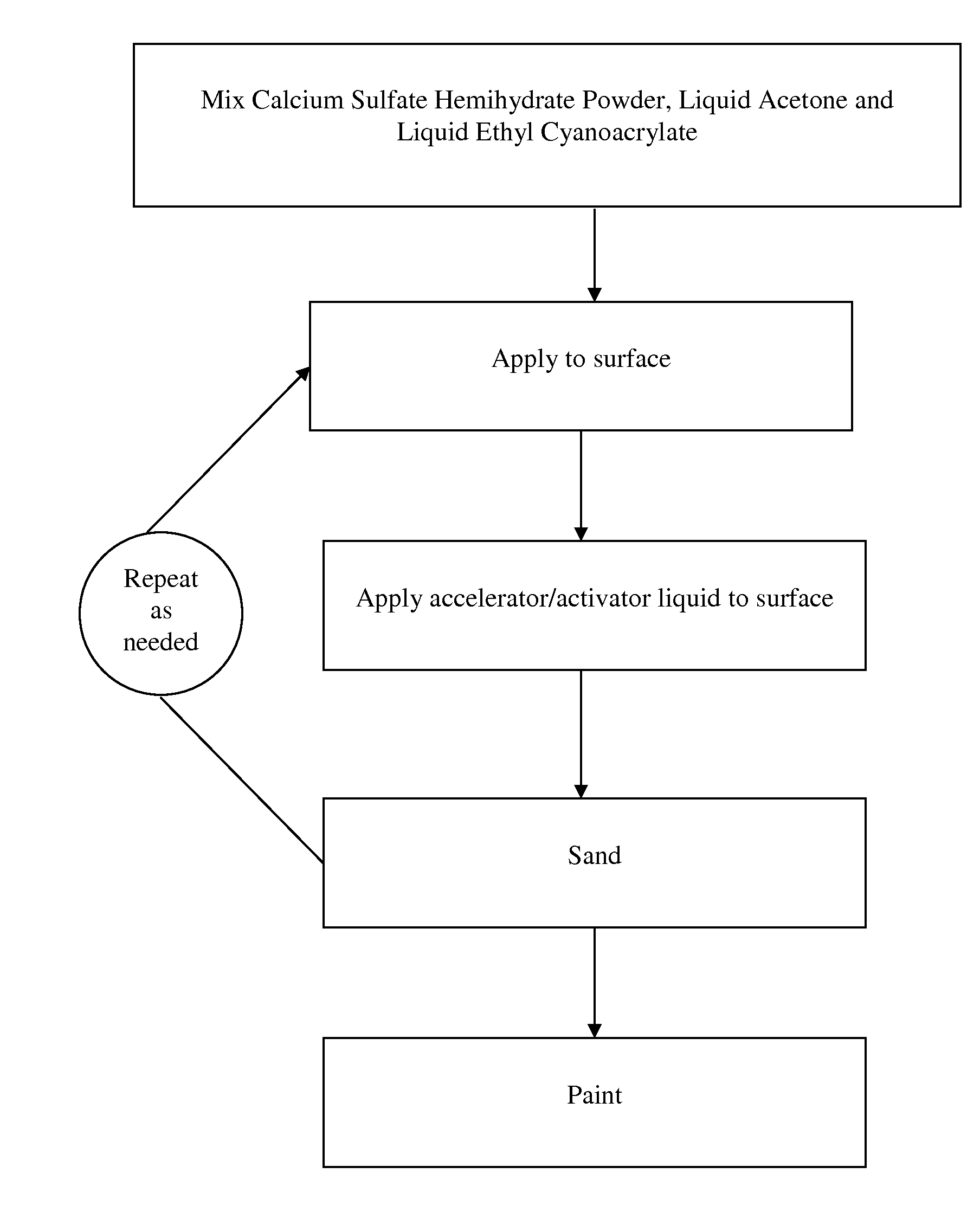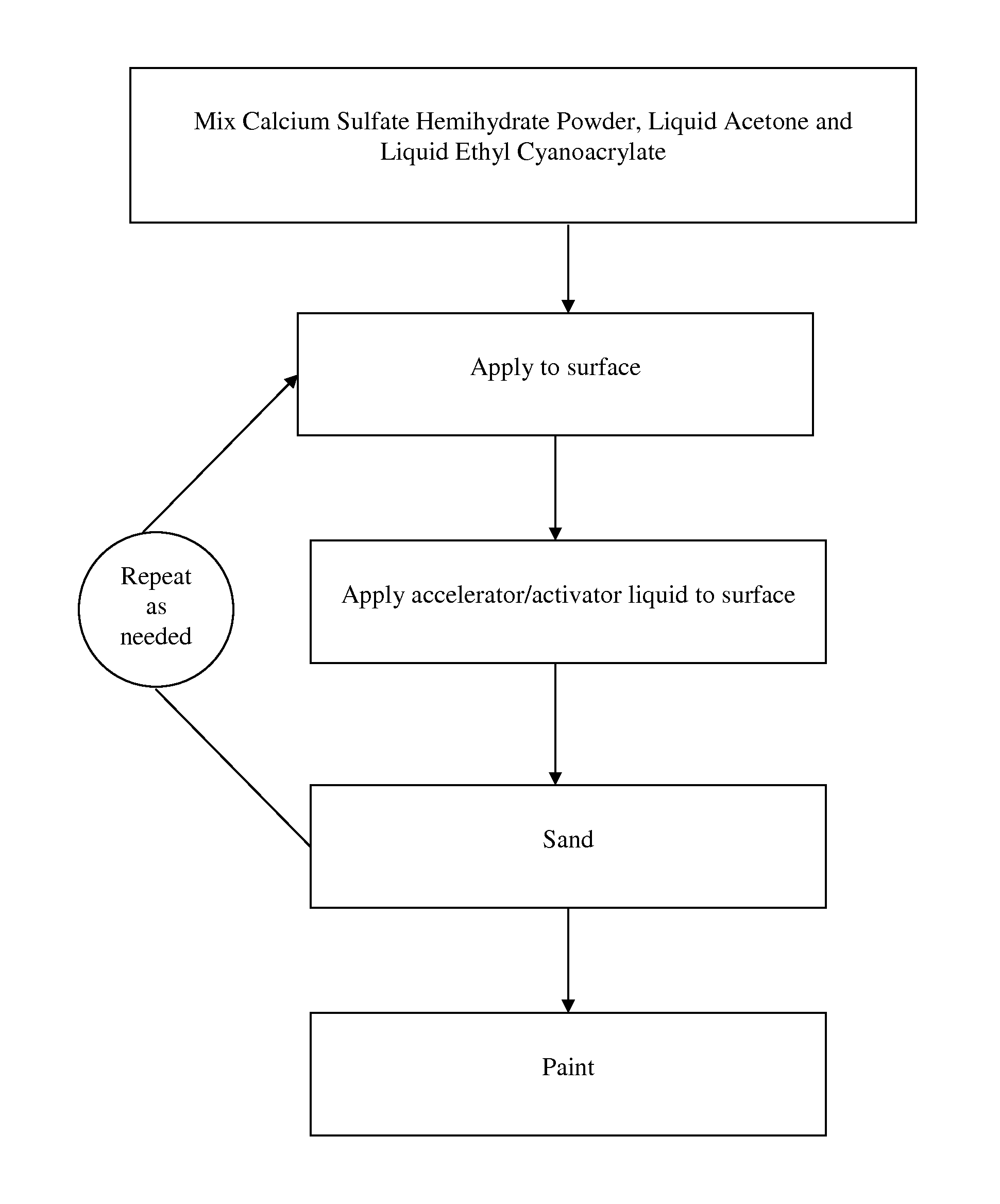Non-aqueous rapid setting drywall compound and method of use
a compound and non-aqueous technology, applied in the field of drywall compound and method of application, can solve the problems of shortening the cure time and the compound cannot cure too quickly, and the cure time is not optimal for spot applications
- Summary
- Abstract
- Description
- Claims
- Application Information
AI Technical Summary
Benefits of technology
Problems solved by technology
Method used
Image
Examples
Embodiment Construction
[0007]The invention is a non-aqueous drywall compound, also known as joint compounds, wall repair compounds, taping compounds, or mud, used to conceal joints or repair defects in gypsum wallboard or similar panels, as well as the method of use of the drywall compound. The compound is the combination of a non-aqueous first component applied in a pliable putty form to a surface and an accelerator or activator component, also non-aqueous, applied to the surface of the first mixture, whereby the compound then cures or hardens within minutes to create a rigid solid having a surface that can be sanded into a smooth, hard surface to receive successive layers of the compound or be painted.
[0008]As used herein, the term “non-aqueous” shall define a compound formed as a mixture of particular compositions (in dry powder and liquid form) with no water being added to the mixture of compositions to facilitate mixing, blending, spreading, etc. to create the first component as defined below. The te...
PUM
| Property | Measurement | Unit |
|---|---|---|
| wt % | aaaaa | aaaaa |
| wt % | aaaaa | aaaaa |
| wt % | aaaaa | aaaaa |
Abstract
Description
Claims
Application Information
 Login to View More
Login to View More - R&D
- Intellectual Property
- Life Sciences
- Materials
- Tech Scout
- Unparalleled Data Quality
- Higher Quality Content
- 60% Fewer Hallucinations
Browse by: Latest US Patents, China's latest patents, Technical Efficacy Thesaurus, Application Domain, Technology Topic, Popular Technical Reports.
© 2025 PatSnap. All rights reserved.Legal|Privacy policy|Modern Slavery Act Transparency Statement|Sitemap|About US| Contact US: help@patsnap.com


